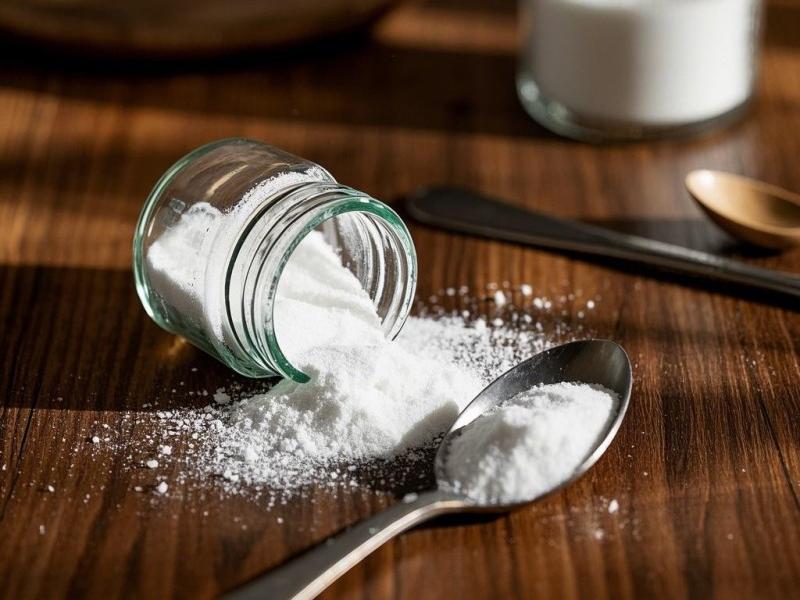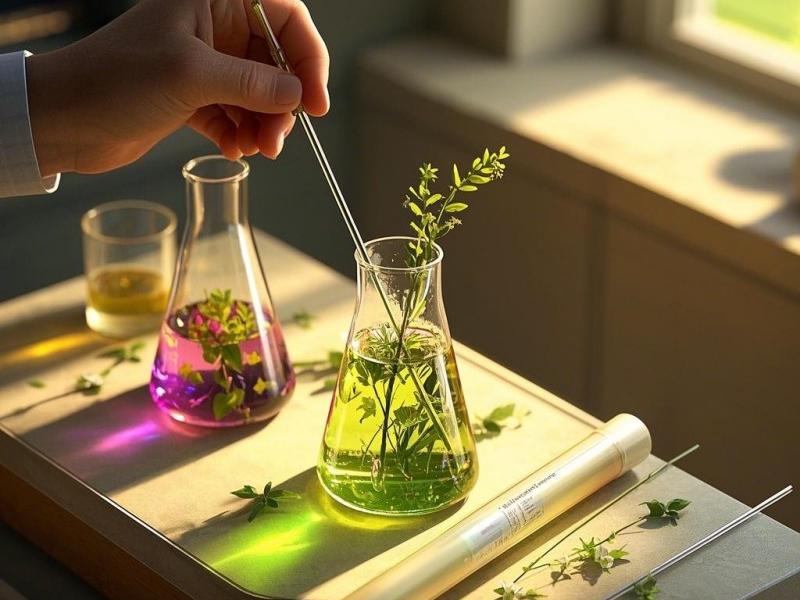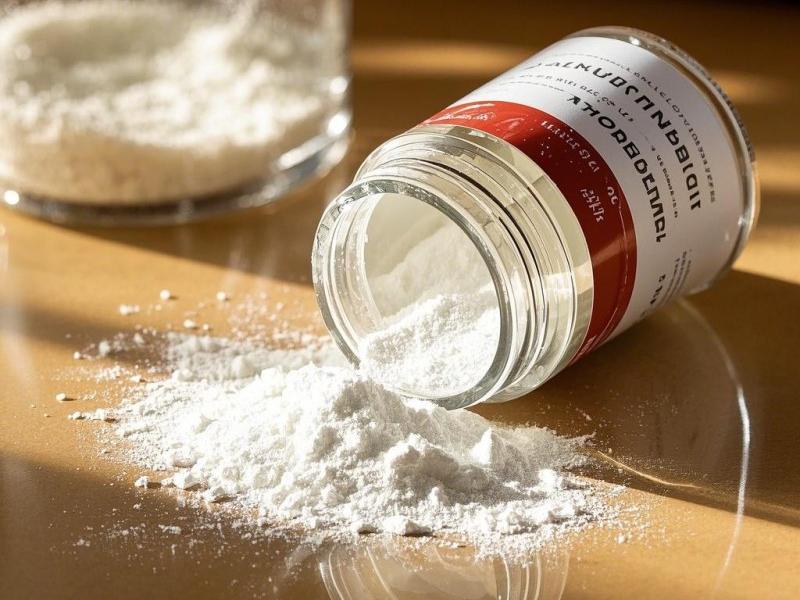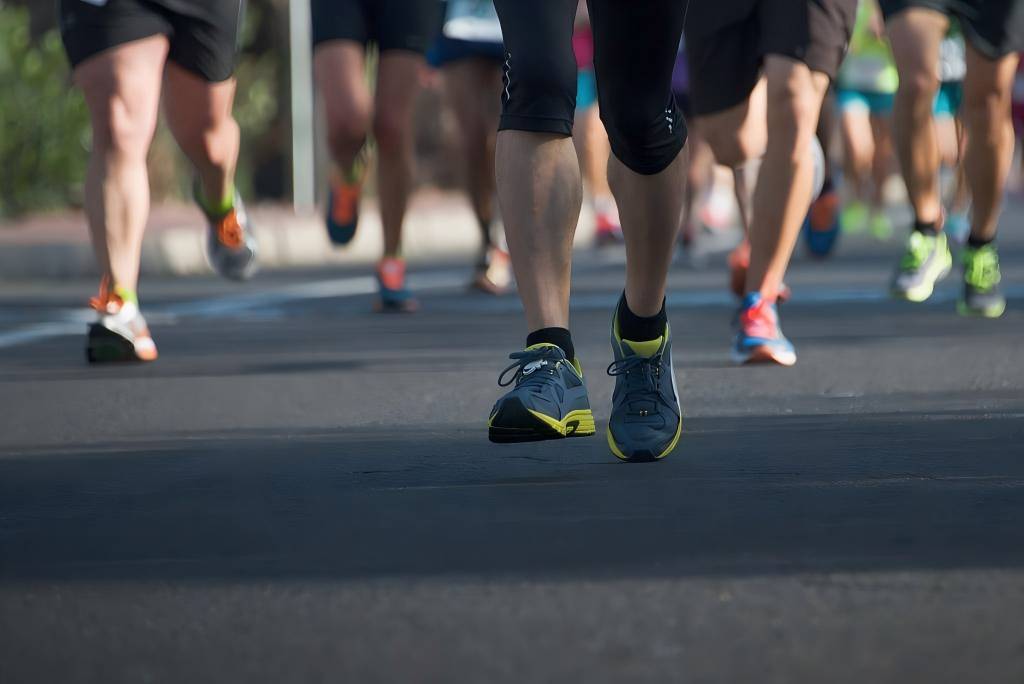Is Octacosanol Powder Safe?
1 Preface
Octacosanol, commonly known as Montanol, has the chemical name 1-octacosanol or n-octacosanol. It is a naturally occurring high-grade fatty alcohol [1]. It has a relative molecular mass of 410 and is a white powder or scaly crystal with a melting point of 81°C to 83°C. In 1949, Dr. T. K. Cureton of the University of Illinois in the United States and others [2] conducted research on the physiological functions of octacosanol and discovered that it has the physiological function of anti-fatigue, and also has the effect of promoting lipid decomposition in hyperlipidemia [3], improving physical strength, endurance and energy, improves energy metabolism, improves myocardial ischemia [4], protects the liver, and has anticoagulant effects. At present, the development and application of octacosanol has become a hotspot in research and development at home and abroad.
2 Preparation and detection of octacosanol
2.1 Preparation methods
2. 1. 1 Extraction of octacosanol from natural substances
In recent years, although there have been reports of extracting docosanol from Antarctic krill and tomatoes, the current preparation of docosanol powder is still mainly based on cane wax, beeswax and rice bran. The preparation is mainly divided into two steps: the refining of wax and the purification of high-grade fatty alcohols. Common refining methods include saponification, ester exchange, and supercritical CO2 extraction. Purification methods include molecular distillation and recrystallization.
2. 1. 1. 1 Saponification
Saponification is divided into aqueous saponification and alcoholic saponification. Aqueous saponification involves heating a wax in an alkaline solution to hydrolyze and saponify it, producing a mixture of fatty alcohols and fatty acid metal soaps.
In alcohol-phase saponification, the wax ester reacts sufficiently with the base in an alcohol-phase system. Because a large number of basic centers are formed, ester exchange reactions are not likely to occur, and instead the ester reacts directly with the base to form sodium salts of higher fatty acids and higher alcohols. The reaction equation is:
Na OH + RCOOR → RCOONa + HOR'.
Hou Zongfu et al. [5] used aqueous saponification to obtain 40% octacosanol in long-chain fatty alcohols, and alcohol saponification to obtain 66.5% octacosanol in a mixture of long-chain fatty alcohols. Lei Tong Kang et al. [6] improved the alcohol-phase saponification method by adding activated carbon for decolorization and filtration, recovering butanol by evaporation, and then decolorizing and recrystallizing with ethanol to obtain a mixture of high-grade primary fatty alcohols with a 70% content of octacosanol. The method using the latter produces higher levels of octacosanol, with better color and more value for use. It can be seen that although they are both saponification methods, alcohol-phase saponification has a short reaction time, low alkali consumption, and a high yield of octacosanol, while aqueous-phase saponification has the problems of high alkali consumption, long test times, and a low yield of octacosanol. In comparison, alcohol-phase saponification is more suitable for the preparation of octacosanol.
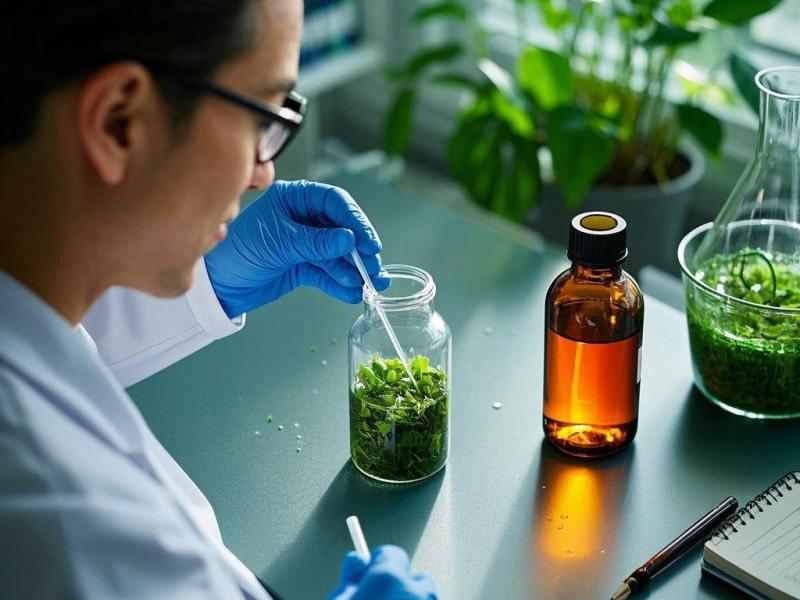
2. 1. 1. 2 Esterification
Chemical esterification is a reversible reaction in which an ester is reacted with another fatty acid, alcohol, itself or another ester to produce a new ester accompanied by acyl exchange or molecular rearrangement, thereby displacing the high-carbon fatty alcohol in the original ester. The main reaction process is: RCOOR' +HOR' ' → RCOOR' ' +HOR'. Chen Fang et al. [7] used furfural as a raw material and used orthogonal experiments to determine the optimal transesterification conditions: butanol as a solvent, KOH as a catalyst, a liquid-to-liquid ratio of 10:1, a reaction time of 8 h, and acetone extraction for 6 h. The product contained long-chain fatty alcohols, and the yield of medium- and high-level fatty alcohols was 43.99%, of which the content of octacosanol was 10.89%. Song Ningning et al. [8] used the same solvent and catalyst, but increased the feed liquid ratio to 1:15 and shortened the reaction time to 4 h to obtain high-carbon fatty alcohols with a 67.09% content of octacosanol. On the one hand, this method is less time-consuming, and the amount of alkali consumed and the amount of spent alkali solution are less than those of the saponification method, which reduces environmental pollution. However, due to the large consumption of butanol, the cost of the experiment is higher, which is not conducive to industrial production.
2. 1. 1. 3 Supercritical carbon dioxide extraction
Supercritical CO2 fluid extraction makes use of the relationship between the solubility of a supercritical fluid and its density, i.e. the influence of pressure and temperature on the solubility of a supercritical fluid. In the supercritical state, the supercritical fluid is brought into contact with the substance to be separated, so that it selectively extracts components in order of polarity, boiling point and molecular weight.
Huo Yanrong et al. [9] used the response surface method to optimize the test parameters and obtained the optimal process conditions for supercritical CO2 extraction: pressure 31.2 MPa, temperature 44.8 °C, time 3.7 h, The yield under these conditions reached 7.5855 mg/g. Guo Hairong et al. [10] determined the optimal process conditions for supercritical CO2 extraction through orthogonal experiments to be an extraction pressure of 30 MPa, an extraction temperature of 50 °C, and an extraction time of 6 h. At this time, the content of 28-hydroxyoctacosanol in the extracted higher fatty alcohol was 47.8% to 62.5%. Studies have found that the yield of octacosanol using supercritical CO2 extraction is higher than that using the hot ethanol reflux method.
2. 1. 1.4 Molecular distillation
Molecular distillation, also known as short path distillation, is a non-equilibrium continuous distillation process carried out under high vacuum. It is also an efficient liquid-liquid separation technique without boiling. Xu et al. [11] studied molecular distillation and concluded that the temperature and vacuum degree of molecular distillation are the main factors affecting the yield of octacosanol. followed by the temperature of the feed mixture and the temperature difference between the condensation surface and the evaporation surface inside the evaporator also having an effect on the product yield. Yang Hao et al. [12] used saponified beeswax as a raw material and used a short path evaporator to carry out molecular distillation, producing a product with a purity of up to 89.78%. Molecular distillation technology has the characteristics of low distillation temperature, low pressure, short heating time, high degree of separation, etc. The operation process is non-toxic, harmless, non-polluting, and residue-free. The mixture of high-grade primary fatty alcohols obtained has a high content of octacosanol, the product has a good odor, and the color is significantly improved compared to the traditional fractional distillation method.
2. 1. 2 Chemical synthesis
Octacosanol can also be synthesized chemically. Feng Youjian et al. [13] and Parker [14] used cyclodecanone as a raw material, reacted it with a secondary amine to obtain an enamine, reacted it with an acid chloride in the presence of a acid-binding agent to obtain a 1,3-dione, and then opened the ring of the 1,3-dione under alkaline conditions to obtain a keto acid. The keto acid was reduced to obtain a high-level fatty acid, which was esterified to obtain a high-level fatty acid ester. with lithium aluminum hydride or sodium-ethanol as the reducing agent, and then recrystallized with hexane to obtain octacosanol with a purity of 99.5%. Zhang Hongkui et al. [15] brominated 1,10-decanediol with hydrobromic acid to highly selectively obtained the monobromination product, protected the hydroxyl group of Br(CH2)10OH to obtain Br(CH2)10OP, then made Br(CH2)10OP into Grignard reagent, and then coupled it with the sulfonate ester prepared from octadecanol in the presence of a cuprous catalyst to obtain protected octacosanol, and finally removed the protective group to obtain octacosanol.
Li Quan [16] also used 1,10-decanediol as a raw material to synthesize octacosanol by reacting with 1-octadecanol: 1,10-decanediol was first used to prepare 10-iododecanol after protecting the hydroxyl group, and then 18+10 coupling was carried out with the Grignard reagent of 1-octadecanol under the catalysis of cuprous salt and 2,2-bipyridine. and finally the hydroxyl protective group was removed to prepare octacosanol. Lv Yangxiao [17] used octacosanol as a raw material and catalyzed the hydrogenation reaction in the presence of platinum-palladium precious metal catalysts in reaction solvents containing lower alcohols with 1 to 6 carbon atoms. The reaction was carried out at a temperature of 100 to 180 °C, a pressure of 3.0 to 6.0 MPa, with stirring at 600–1800 rpm for 2–6 hours, the conversion rate of eicosaene to eicosanol is over 90%.
2.2 Detection methods
2. 2. 1 Infrared spectroscopy
Infrared spectroscopy is a type of molecular absorption spectroscopy. It uses selective absorption of infrared light by different substances to analyze their structures. Wu Xianxue et al. [18] used infrared spectroscopy to track the whereabouts of octacosanol during the extraction and separation process. Comparison with the infrared spectrum of the octacosanol reference substance showed that octacosanol in snow fungus mainly enters the petroleum ether extract during the extraction process. In addition, Lu Zhibo et al. [19] used Fourier transform infrared spectroscopy and second derivative infrared spectroscopy to study and analyze sugar cane peels and extracts. The results showed that the main component of the chloroform extract was octacosanol, and the main components of the extraction residue were cellulose and lignin.
2. 2. 2 Gas chromatography
At present, gas chromatography is mostly used for the qualitative analysis of octacosanol. According to the difference in the content of octacosanol, it is roughly divided into packed column gas chromatography and capillary gas chromatography. For example, Zhang Jing et al. [20] established a gas chromatograph-hydrogen flame ionization detector for the quantitative determination of octacosanol in health food products. It was found that the method is highly sensitive and the results are accurate. The research also found that packed column gas chromatography is more suitable for samples with higher octacosanol content. Huang Wenshu [21] et al. used capillary column-gas chromatography to detect octacosanol in tomato peel wax, and measured that the octacosanol content could reach 35% of the total alcohol content. Zhang Siyuan et al. [22] also used capillary gas chromatography to analyze the content of octacosanol in wheat germ oil, and proved that the use of a capillary column can achieve good separation of impurities and octacosanol in wheat germ oil, etc., to obtain more accurate test results.
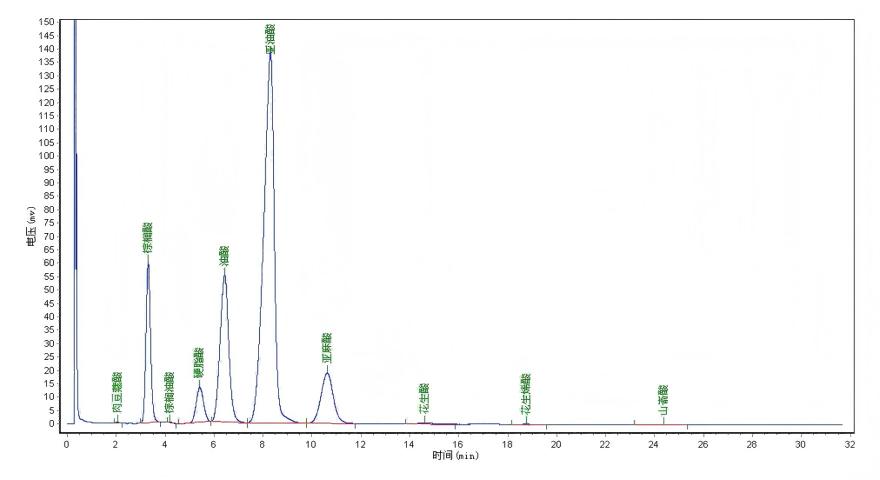
2. 2. 3 Other testing methods
The GC-MS method refers to the use of a gas chromatograph as an ideal “sampler”, in which the sample is separated by chromatography and enters the mass spectrometer as an ideal “detector” in the form of a pure substance for detection. It has the advantages of high separation efficiency, high sensitivity, fast analysis speed, and accurate quantification. Therefore, researchers use it to detect stigmasterol.
Ultra-high performance liquid chromatography has the advantages of short sample preparation time, high detection sensitivity, good separation, and fast analysis, which can effectively improve the efficiency and quality of the analysis. Due to the high boiling point of octacosanol, a derivatization process is required before gas chromatography, which leads to disadvantages such as slight errors in the test data. Therefore, some researchers have applied the ultra-high performance liquid chromatography-evaporative light scattering detector (UPLC-ELSD) method to the detection of octacosanol. Wen fang Gao et al. [23] first used high-performance thin-layer chromatography with petroleum ether as the mobile phase and bromocresol blue as an indicator, to detect and analyze the content of eicosanol in Antarctic krill. It was found that this method is not only highly sensitive, but also time-saving and has simple experimental steps. It can also be used to quantitatively analyze samples.
3 Safety research on octacosanol
In recent years, as the extraction and detection techniques for octacosanol powder have become more complete, researchers have gradually begun to study the application of octacosanol, such as in feed, food, medicine, and other fields. Therefore, the safety of octacosanol in applications has also become a key concern.

Long Lei [24] and others used mice as test subjects to evaluate the safety of octacosanol extracted from rice bran wax. They mixed 28-hydroxyoctacosane extracted from rice bran wax with oil and fat in a ratio of 1:1 with a purity of ≥50%, and mixed it thoroughly with a carrier at a ratio of 1:12.5. This mixture was used as the test substance and added to the mouse feed at a dose of 1g/kg.
The results of the acute toxicity test showed that during the 14-day observation period, no abnormalities were observed in either the female or male mice or rats, and there were no deaths. The Ames test of the genetic toxicity test showed that the mean revertant colony count per dish in the negative control group was within the normal range, while the revertant colony count in the positive control group was more than twice that of the negative control group, indicating a positive reaction. indicating that 2-octacosanol has no mutagenic effect on inducing revertant mutations in the test strain. Therefore, it is considered that the sample is not mutagenic. In the mouse bone marrow cell micronucleus test, it was found that the micronucleus rates of both male and female animals in the positive control group were significantly higher than those in the negative control group (P<0.01), and there was no significant difference between the negative control and each test group (P>0.05), indicating that the test sample did not show a mutagenic effect of increasing the micronucleus rate of PCE cells in mouse bone marrow. The mouse sperm aberration test found that there was no significant difference in the sperm aberration rate of animals in each test group compared to the negative control group (P>0.05), indicating that the incidence of sperm aberrations in mice was not affected by the test sample. In addition, in the 30-day feeding test in rats, there were no significant differences in the overall health status of the animals, biochemical and hematological indicators, and abnormal changes in the morphology of organ tissues compared to the control group.
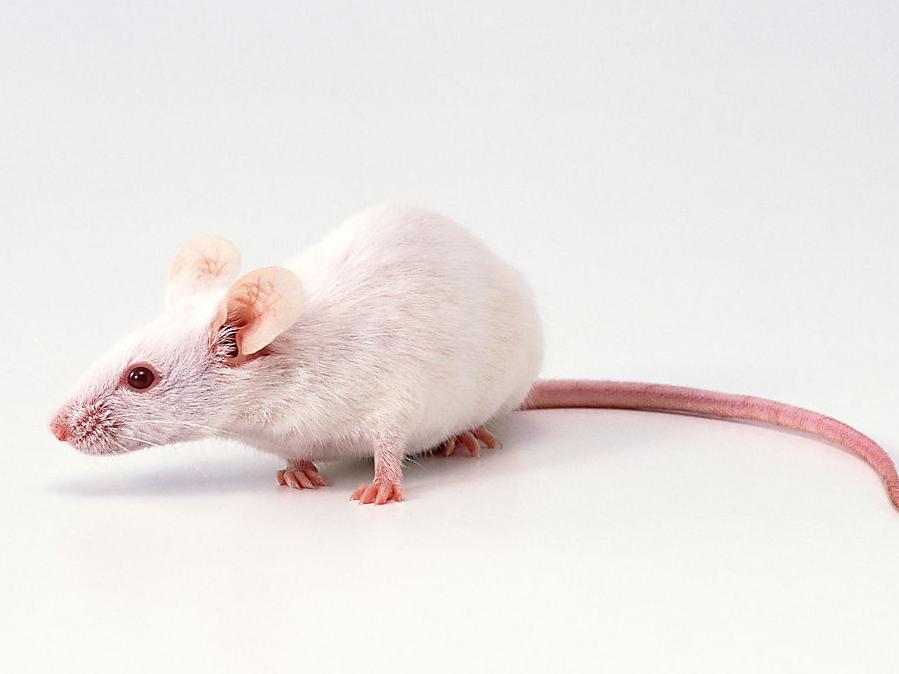
This study provides an important basis for the safety of the application of octacosanol in the feed industry. Zhong Geng [25] and others were the first in China to use high-purity (≥90%) octacosanol in a health food product, oil capsules. Acute toxicity tests, genotoxicity tests, micronucleus tests in mouse bone marrow erythrocytes, mouse sperm deformity tests and a 30-day rat feeding trial were also conducted. The results showed that The acute oral LD50 of oil capsules containing high-purity octacosanol is greater than 10 g/(kg·bw) in rats and mice, and they are judged to be practically non-toxic. The Ames test, mouse bone marrow polychromatic erythrocyte micronucleus test and mouse sperm deformity test are all negative, indicating that the subject has no mutagenic effect. In the 30-day rat feeding trial, no abnormal changes were observed in the animals' health status, biochemical and hematological indicators, or organ and tissue morphology. The study passed the inspection of the S FDA-recognized health food inspection agency, providing a basis for the safe application of octacosanol in China.
4 Application of octacosanol powder
Octacosanol has a variety of physiological functions and has broad application prospects in fields such as food, medicine, and animal feed. Japan and the United States are among the countries that have conducted early research on the application of octacosanol, and there are already dozens of patents involving the application of functional foods, medicine, and cosmetics, some of which have been industrialized.
4.1 Application of octacosanol powder in feed
China is gradually strengthening research on the application of octacosanol, especially in animal feed. Long Lei et al. [26] added octacosanol to feed and used weaned piglets and laying hens as research subjects. It is speculated that the maximum no-effect dose of octacosanol for animals is greater than 40 mg/kg; the appropriate amount of octacosanol added to the diet of laying hens is 16 mg/kg; or the addition of octacosanol emulsion to poultry feed can reduce subcutaneous and visceral fat deposition in poultry and enhance the body's resistance to various harmful stimuli. Octacosanol has also been added to the diet of forest frogs. A comparison of the test group with the control group showed that the growth rate of the forest frogs increased by 8%, the feed conversion ratio decreased by 13%, and the mortality rate decreased by 21%. This shows that the use of feed containing octacosanol not only significantly improves disease resistance and growth rate, increases survival rate, but also reduces feed costs, makes the feed easier to store, and increases added value.
4.2 Octacosanol in food health care
Octacosanol powder is mostly used in drinks. For example, octacosanol emulsion is added to a sucrose solution containing ingredients such as fructose-glucose syrup, and functional sports drinks are obtained through steps such as high-temperature homogenization and heat sterilization. Studies by scientists have shown that athletes who consume drinks containing appropriate amounts of octacosanol have significantly improved blood lipid metabolism, significantly improved exercise capacity, and can delay exercise fatigue. In addition, Lin Xiaohui [27] added 28-hydroxycholestanol to tartary buckwheat tea to make a tea drink, while Zhang Zesheng [28] used sucrose and β-cyclodextrin as wall materials, 28-hydroxycholestanol and palm oil and other groups as core materials, and made a form of instant coffee containing 28-hydroxycholestanol in the form of microcapsules. This has the effect of quickly restoring physical strength, accelerating the elimination of fatigue, and promoting physical fitness.
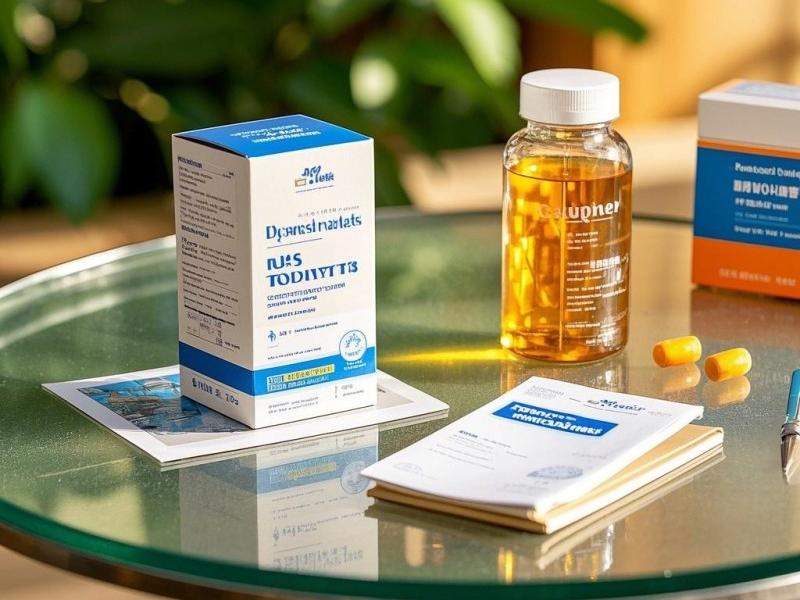
4.3 Clinical application of octacosanol in medicine
Octacosanol powder has been used in medicine for a long time. In 2001, Castano et al. [29] found that octacosanol can significantly reduce the ratio of low-density lipoprotein to high-density lipoprotein, but also the ratio of total cholesterol to HDL. Zu yuan Xu et al. [30] and Simon et al. [31] concluded from their experiments that octacosanol has a lipid-lowering effect and can prevent arteriosclerosis. Sylvia Keller et al. [32] studied the faeces of rats given octacosanol and found that although the serum cholesterol concentration was not affected, the concentration of the final cholesterol product in the faeces was reduced. which indicates that octacosanol has a positive effect on the systemic metabolism of cholesterol. Therefore, for patients with hypercholesterolemia and coronary artery disease, treatment with drugs containing octacosanol is a better choice. Experiments on mice have confirmed that octacosanol not only has anti-inflammatory and analgesic effects [33], but also has excellent tolerance and is non-toxic. It has a relieving effect on the treatment of Parkinson's syndrome [34] and is a promising way to treat Parkinson's disease.
Scientists have conducted systematic studies on the use of octacosanol to relieve altitude sickness and hypoxia. Experiments on mice have found that the degree of edema in the heart and brain tissue of the hypoxia drug group was reduced compared to the hypoxia control group, and the effect was more pronounced in brain tissue than in heart tissue. It was concluded that octacosanol can improve the hypoxia tolerance of rats and has a certain protective effect on the structure of heart and brain tissue cells in hypoxic rats. It was also found that octacosanol significantly prolonged the survival time of mice with cyanide poisoning and hypoxia, and could play an effective preventive and curative role. In addition, octacosanol also effectively promotes blood circulation in the skin and activates surface cells, so it is also used in the cosmetics industry. Cosmetics containing octacosanol have a good therapeutic effect on skin diseases such as athlete's foot, eczema, itching, and acne.
have a good curative effect.
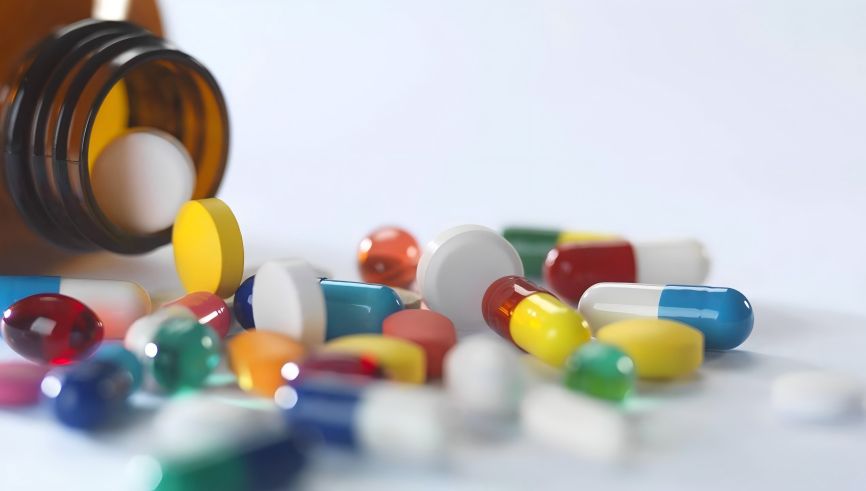
5 Outlook
In China, the planting of rice and sugar cane is among the highest in the world, and the by-products of these crops—rice bran and sugar cane wax—are the main raw materials for the production of octacosanol. This shows that enhancing the development and utilization of these by-products is of great significance for promoting the application and development of octacosanol and improving the comprehensive benefits of by-product resources. There have been many studies on the preparation and synthesis of octacosanol, but there are still problems: the process is not mature enough, there are organic solvent residues, purification is energy intensive and pollutes the environment, and the purity of the extract does not meet requirements; some synthetic processes are difficult to operate and require high-quality equipment, so they are limited to laboratories. Therefore, whether it is extracted from natural products or synthesized chemically, the problem of achieving industrial production remains.
In addition, the physiological functions of octacosanol are closely related to energy metabolism in the body, so studying the physiological and metabolic effects of octacosanol is of great significance for the human body. Although relevant toxicological safety tests have been conducted on octacosanol in China, there has been little research and development of drugs containing octacosanol. Most of the research on drugs containing octacosanol abroad has been theoretical and has rarely entered clinical application, and further exploration is needed.
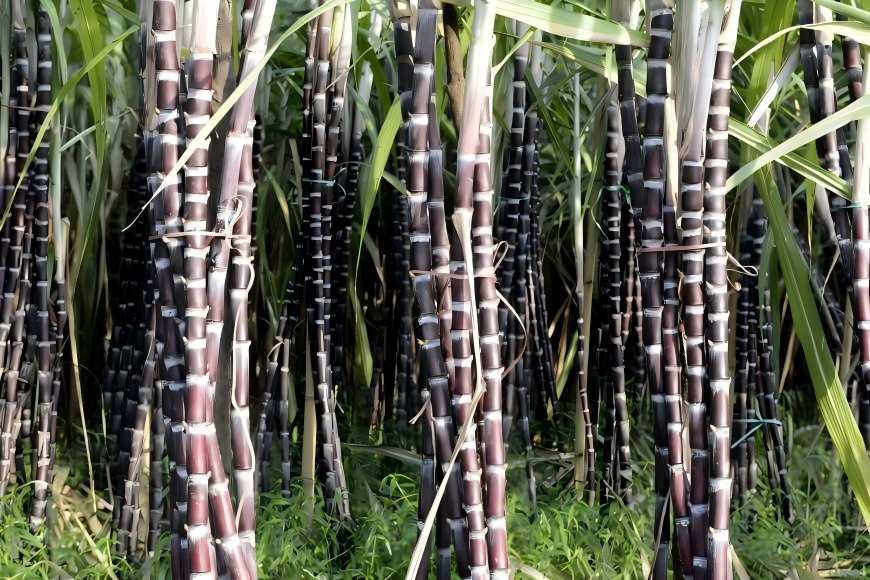
In foreign countries, some products containing octacosanol, such as functional drinks, biscuits, and health products, have already been mass-produced. However, there are still gaps in these areas in China. Because octacosanol has a variety of physiological functions, it can be widely used in food, medicine, feed, cosmetics, and other aspects. It has broad development prospects. If it can be fully utilized, it will not only benefit the public, but also bring huge economic and social benefits.
Reference:
[1] Menendez R,Marrero D,Mas R,et al. In Vitro and In VivoStudy of Octacosanol Metabolism[J].Arch Med Res, 2005,36:113-119.
[2] Cureton T K.The physiological effects of wheat oil on hu- man in exercise sport field [M].Illinois UACC Thomas Publishes.1978:246-252.
[3] Kabir Y,Kimura S.Distribution of Radioactive Octacosanol in Response to Exercise in Rats [J].Nahrung,1994 ,38: 373-377.
[4] Xu ZY,Fitz E,Riediger N,et al. Moghadasian.Dietary oc-tacosanol reduces plasma triacylglycerol levels but not atherogenesis in apolipoprotein E knockout mice[J].Nu- trRes,2007,27:212-217.
[5] Hou Zongfu, Deng Danwen, Zhang Bin, et al. Preparation and purification of octacosanol from sugarcane wax [J]. Food and Fermentation Industry, 2007 (2): 82-84.
[6] Lei Tongkang. A method for preparing a mixture of high-grade primary fatty alcohols from sugarcane wax [P]. Chinese patent: 1321627 2001-10-03.
[7] Chen Fang, Extraction and purification of eicosanol from rice bran and its anti-fatigue function [D], Beijing: China Agricultural University, 2003.
[8] Song Ningning, Guo Hairong, Chen Ganlin. Study on the extraction of high carbon fatty alcohols from sugarcane wax by transesterification [J]. Food Research and Development. 2008, 29 (6): 28-31.
[9] Huo Yanrong, Gao Qianxin, Wu Fenghua. Optimization of Supercritical CO2 Extraction of Octacosanol from Sugarcane by Response Surface Methodology [J]. Forest Chemical Industry. 2009, 29(6): 73-78.
[10] Guo Hairong, Song Ningning, Chen Ganlin. Supercritical CO2 Extraction of High-grade Fatty Alcohols from Sugarcane Filter Cake [J]. Food Industry Science and Technology. 2011, 32(9): 249-253.
[11] Xu Songlin, Wang Junwu, Xu Shimin. Purification of Octa-cosanol by Agitated Short-Path Distillation [J]. Chinese J. Chem. Eng. 2003, 11(4): 480-482.
[12] Yang Hao, Li Lilong, Wu Xin. Study on the preparation process of octacosanol from beeswax [J]. Journal of Jiangxi Agricultural University. 2012, 34(5): 1053-1057.
[13] Feng Youjian. A preparation method for octacosanol: China, 1861551 [P]. 2006-11-15.
[14] Parker D K. Method for synthesis of long-chain alcohols: US, 4367346 [P]. 1982-04-23.
[15] Zhang Hongkui. A method for preparing octacosanol: China, 101121636 [P]. 2008-02-13.
[16] Li Quan. A method for synthesizing octacosanol: China, 101481294 [P], 2009-07-15.
[17] Lv Yangxiao. A method for preparing octacosanol: China, 101186558 [P], 2008-05-28.
[18] Wu Xianxue, Wang Guangjiang, Zhu Xuan. Infrared spectral tracking analysis of octacosanol during the extraction of Ganoderma lucidum [J]. Journal of Yunnan University for Nationalities, 2014, 23 (1): 24-7.
[19] Lu Zhibo, Wu Xianxue, Yang Shuo, et al. Infrared spectral analysis of sugarcane bagasse and its extracts [J]. Journal of Yuxi Normal College, 2013, 12(29): 13-16.
[20] Zhang Jing, Wang Liyuan, Tang Jun, etc. Gas chromatographic detection of octacosanol in health food [J]. China Health Inspection, 2012, 22(3): 461-463.
[21] Huang Wenshu, Liao Xiaohui, Wang Chenxi, etc. Determination of the content of octacosanol in tomato peel wax by gas chromatography [J]. Chinese Food Additives, 2010 (05): 220-223.
[22] Zhang Siyuan, Wang Hui, Yu Yonghong. Determination of the content of octacosanol in wheat germ oil by gas chromatography [J]. Chinese Food Additives. 2013, 5: 189-193.
[23]Wenfang Gao,Daicheng Liu,and Shupeng Su. High-Performance Thin Layer Chromatography for Quantification of 1-Octacosanol in Antarctic Krill (Euphausia superba Dana).Journal of Chromatographic Science.2015,53: 811-815.
[24] Long Lei, Peng Kai, Gao Muzhen. Safety toxicological study of octacosanol as a feed additive. Feed Additives. 2014, 12: 28-33.
[25] Zhong Geng, Wei Yimin, Shi Chang'ou. Safety toxicological evaluation of oil capsules containing octacosanol. Journal of Food and Biotechnology. 2006, 4 (25): 11-15.
[26] Long L, Development and application of a new feed additive, octacosanol [D]. Beijing: China Agricultural University, 2014.
[27] Lin X H. Development of a tartary buckwheat tea beverage containing octacosanol [J]. Experimental Report and Theoretical Research. 2010, 13(9): 23-26.
[28] Zhang Zesheng. Coffee mate containing octacosanol and method of preparation thereof: China, 101204216 [P], 2008-06-25.
[29]Castano G,RosaM,Fernadez,et al,Effects of policosanol in older patients with type II hypercholesterolemia and high coronary risk [J].Journals of Gerontology,2001,56 (3):186-192.
[30]Zuyuan Xu,Evelyn Fitz,Natalie Riediger,et al. Dietary octacosanol reduces plasma triacylglycerol levels but not atherogenesis in apolipoprotein E-knockout mice. Nutri- tion Research.2007,27:212-217.
[31]Simonetta Oliaro-Bosso Emanuela Calcio Gaudino Stefano Mantegn.Regulation of HMGCoA Reductase Activity by Policosanol and Octacosadienol,a New Synthetic Ana- logue of Octacosanol.Lipids,2009(44):907-916.
[32]Sylvia Keller,Franziska Gimmler,Gerhard Jahreis Octa- cosanol Administration to Humans Decreases NeutralS- terol and Bile Acid Concentration in Feces.Lipids, 2008,43:109-115.
[33]AndersonMarques de Olixeira,Lucia M.Conserva,Jamylle N de Souza Ferro International Journal of Molecular Sci- ences[J].2012,13:1598-1611.
[34]Tao Wang,Yanyong Liu,Nan Yang Anti-parkinsonian effects of octacosanol in 1 -methyl -4 -phenyl -1,2,3,6te- trahydropyridine -treated mic.Neural Regen Res. 2012,5 (14):1080-1087.


 English
English French
French Spanish
Spanish Russian
Russian Korean
Korean Japanese
Japanese